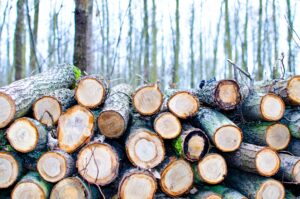10 Adverse effects of Deforestation on Biodiversity.The massive cutting down of forests, or deforestation, has an enormous risk to the biodiversity of the natural world. The wide range of different species which forests maintain, comprising small invertebrates to the largest mammals, is severely harmed when they die. Through keeping knowledgeable of how deforestation harms biodiversity, that we can take necessary steps to keep these vital habitats.
10 Adverse effects of Deforestation on Biodiversity

Approximately 80% of all terrestrial species on Earth, including fungi, animals, plants, and microbes, live in forests. Numerous species’ habitats are destroyed by deforestation, which also upsets the intricate web of life and has numerous direct and indirect effects on biodiversity.
Habitat Loss
Many species are forced to move, adapt to new conditions, or risk extinction when their natural habitats are lost by forest clearing. Numerous species experience a sharp fall in population when they are forced to live outside of their natural habitat.

Decreased Species Diversity
Numerous species are unique to their respective locales, making forests immensely diverse. Deforestation effects the ecosystem on entire by decreasing the number in species in a given area. Certain species that are specific to a given forest might go extinct.
Disruption of Food Chains
When trees and other vegetation are removed, local food chains are upset because herbivores are deprived of their food supplies, which negatively impacts the predators who depend on them. The demise of entire ecosystems could result from this cascading impact.
Increased Vulnerability to Natural Disasters
A vital part of maintaining environmental stability is played by forests. The likelihood of landslides and floods increases when they are destroyed. Animal habitats are destroyed in addition to having an impact on human settlements.

Loss of Medicinal Plants
Numerous plants found in forests are used in both conventional medicine and contemporary pharmaceuticals due to their therapeutic qualities. The abundance of these plants is threatened by deforestation, which may result in the loss of possible treatments for a number of illnesses.
Reduced Carbon Sequestration
As carbon sinks, forests soak in carbon dioxide from the atmosphere. By limiting this capacity and creating climate change and global warming, deforestation threatens biodiversity through altered habitats and sources of food.As carbon sinks, forests absorb down carbon dioxide from the environment. By decreasing this capacity and creating climate change and global warming, deforestation threatens biodiversity by changing habitats and supplies of food.
Altered Water Cycles
Because they absorb and release water, trees aid in the regulation of the water cycle. The disruption of local and international water cycles caused by forest clearing can alter precipitation patterns, which in turn can affect species that rely on particular climate conditions. For more.
Soil Erosion
Increased soil erosion results from deforestation because tree roots cannot stabilise the soil. This affects aquatic ecosystems and species by causing sedimentation in rivers and lowering the standard of soil for future plant development.
Invasive Species Proliferation
Invasive species often take over when native species vanish due to habitat loss. Further decrease in biodiversity can come in these species’ ability to infect, compete with, or infect native species by diseases.
Reduced Pollination and Seed Dispersal
Numerous forest species are essential for seed distribution and pollination. These species went dead as a result of deforestation, which also interferes with plant reproduction and reduces the diversity of plants.
Conclusion
Deforestation has a major effect on biodiversity, effecting everything from the existence of species to the climate on the whole earth. Preserving a complicated chain of life that keep the earth going is the true aim of protecting forests, not merely saving trees. We are all capable of contributing in preventing deforestation by promoting sustainable actions, increasing awareness, and making environmentally good decisions.
FAQ’s
- Why is biodiversity important?
Healthy ecosystems are dependent on biodiversity to continue providing resources like food, clean water, and air as well as assisting in climate regulation.
- How does deforestation impact humans?
Deforestation affects humans by increasing the risk of natural disasters, contributing to climate change, and reducing resources like clean water, food, and medicine.
- What can be done to reduce deforestation?
Support sustainable forestry, reduce paper and wood consumption, promote awareness, and encourage policies that protect forests and restore degraded lands.
- Are there any positive effects of deforestation?
While deforestation may provide short-term economic benefits like land for agriculture, the long-term environmental impacts far outweigh these gains.
- How does deforestation contribute to climate change?
Deforestation raises the quantity of CO2 in the air and contributes to global warming because it reduces the amount of woods that soak CO2, a greenhouse gas.

1 thought on “10 Adverse effects of Deforestation on Biodiversity”